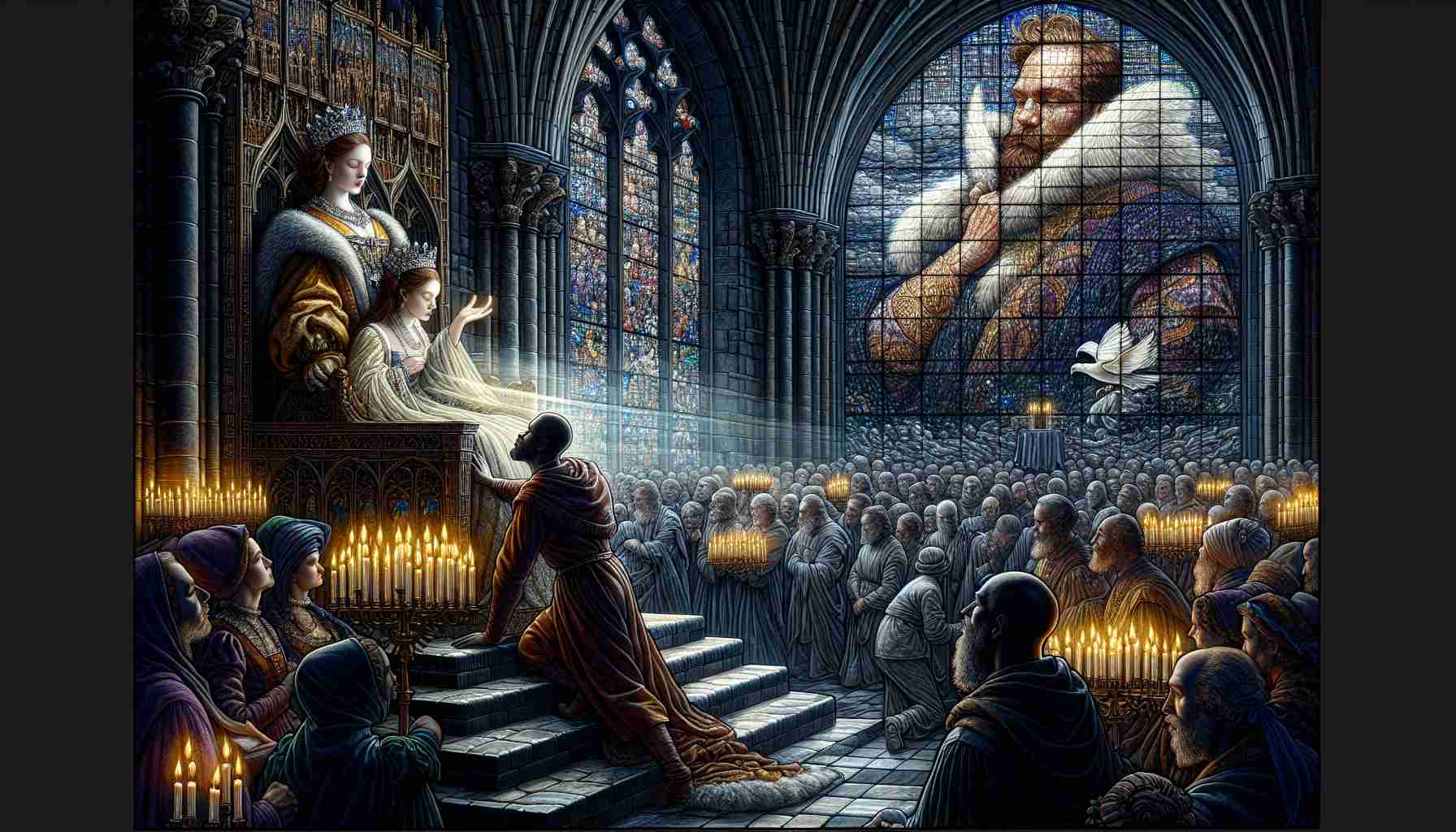

The bells of Holyrood Abbey tolled through the damp Edinburgh air, summoning a nation to the sight of new majesty.
May 17, 1590—beneath the vaulted arches shadowed by centuries, Anne of Denmark knelt upon a velvet-prayer cushion before the altar, her head bowed to the whisper of Latin prayers and the scent of beeswax candles mingled with incense. Her chest rose and fell in rhythm with her silent devotion. Shafts of spring sunlight pierced the stained-glass saints overhead, casting rubies and sapphires upon her royal gown. The minister’s voice echoed against the stone as he anointed her forehead with sacred oil, invoking the wisdom and grace of the One who deposes and exalts kings.
"Favour is deceitful, and beauty is vain: but a woman that feareth the Lord, she shall be praised," intoned the Bishop, lifting the golden circlet shaped with thistles and lilies. His hands did not falter. The words were not merely ceremonial. They were a blessing—and perhaps, a prophecy.
Anne rose, now Queen Consort of Scotland.
Sixteen years old and far from her Lutheran roots in Denmark, she had crossed the treacherous North Sea to wed King James VI, a man raised by political tempests and theological debates, crowned as an infant, and burdened with the need to bind a fractured realm. She, too, would wear that burden—silently, persistently. And she would wear it with faith.
The court whispered behind embroidered fans and feathered hats. Would a foreign bride bend beneath the weight of a divided kirk? Could a woman of Wittenberg kneel in St. Giles? They murmured of her stubbornness, her courtly extravagance, and her patronage of the arts more than psalms. Yet they did not see how, in private, she returned again and again to the Scriptures, now read in English translation—words once banned and now blessed.
She was no preacher, no theologian. But Anne’s influence moved through subtler waters. She sponsored poor churches in the Highlands and supported the Chapel Royal with fervor. Where whispers of reform met anger, her touch softened. When the old nobles groaned against the King’s leanings toward bishops, it was Anne’s steady diplomacy that quieted chambers and soothed private quarrels. She never preached unity—but she lived it.
And always, her faith bore fruit in the arts. Under her hand, court masques married sacred verse with beauty. Orphanages flourished under her patronage. She commissioned altarpieces where Scripture spoke through color and brushstroke. The creed she had once inherited from German reformers now found new life in this island land; her heart, converted by conviction and calling, sang in both languages.
When the crown of England rested upon James's brow in 1603, Anne entered Westminster Abbey not as stranger but Queen of a united throne. Behind her, Scotland’s bitter winds faded like a bad dream. Before her, the winding halls of Whitehall and English politics lay. Yet she did not flinch.
In London, her chapels echoed with new psalms, and her charities crossed borders once soaked in blood. Some said she contradicted herself—too Lutheran for the bishops, too Anglican for the Puritans, too regal for the pious, too devout for the court’s libertines. But none could deny her devotion infused the crown with grace. In her presence, even James—so often torn by intellect and ego—spoke more gently, confessed more freely. She was a quiet chorus to his thunder.
The years waned. Wars and plots, masks and betrayals shadowed the court. The gunpowder treason threatened to sever what she had helped to stitch. But when parliament hissed and barons spat doctrine, Anne reminded them—often not with words, but through steadfast intercession and the quiet dignities of a life walked with reverence—that royalty must bend to righteousness, and nations flourish only when hearts align with heaven’s will.
When she died in 1619, neither Lutheran nor Anglican mourned her alone. Bells rang in Edinburgh and London both. A woman who feared the Lord had dwelt among them, and many had risen to call her blessed.
At Holyrood, ivy now coils around stone walls once resounding with her vows. Tourists pass beneath the ruined arches, snapping photographs where Anne had once knelt in glory. A queen in a foreign land, a bride in an age of swords, a woman whose beauty faded but whose faith endured.
And still the Word endures: “A woman that feareth the Lord, she shall be praised.”
Anne’s crown lies buried, but her legacy breathes every time believer and skeptic sing in the same sanctuary, every time grace bridges what pride would see fractured.
In her rising, nations glimpsed peace. In her faith, the throne found a witness not of power, but of purpose.